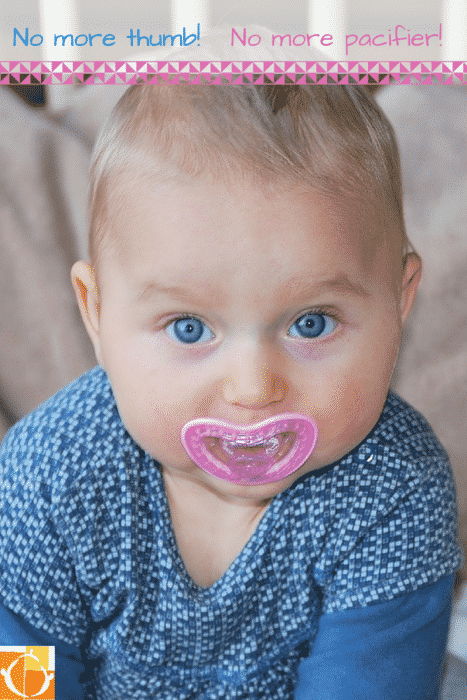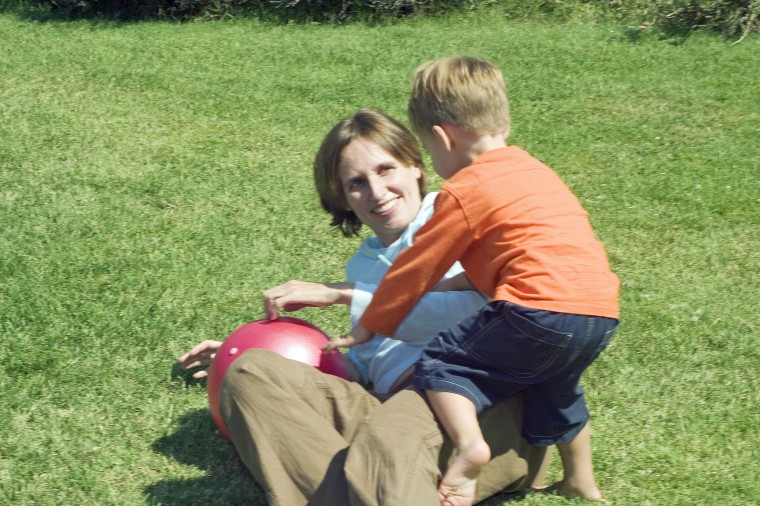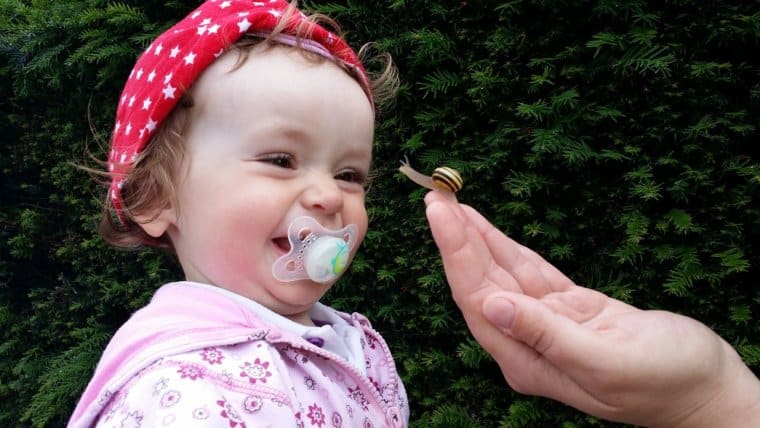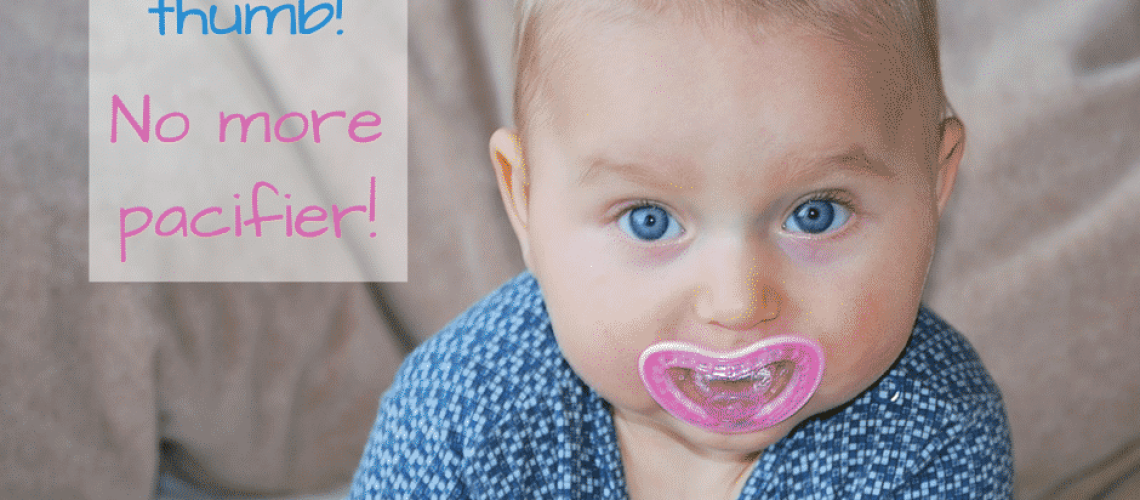 We adults have lots of ways to distract ourselves from feeling a little off base. We jiggle our feet, chew on a pencil, snack and snack again, read the paper, or sneak in a bit of computer solitaire. Some of us turn to nicotine or caffeine, or to other habits that we know aren't good for us. We are occasionally aware that we take these little detours when we don't feel as smart or confident or hopeful as we'd like to feel. But often, we soothe ourselves without even noticing our outlook at the moment. We've grown accustomed to these behavior patterns, which arose when it was too hard to address uncomfortable feelings or unworkable situations.
We adults have lots of ways to distract ourselves from feeling a little off base. We jiggle our feet, chew on a pencil, snack and snack again, read the paper, or sneak in a bit of computer solitaire. Some of us turn to nicotine or caffeine, or to other habits that we know aren't good for us. We are occasionally aware that we take these little detours when we don't feel as smart or confident or hopeful as we'd like to feel. But often, we soothe ourselves without even noticing our outlook at the moment. We've grown accustomed to these behavior patterns, which arose when it was too hard to address uncomfortable feelings or unworkable situations.
 Infants and young children collect little sets of uncomfortable feelings, too. They sometimes feel restless, unsure of our attention, perhaps a bit frightened, or too separate to be fully pleased. Sometimes they long for the love we give them, but can't find us at that moment. And sometimes we're right next to them, loving them, but in spite of everything being OK around them, they just don't feel good. Our culture teaches parents that bad feelings must be covered over. When uncomfortable feelings creep up on a baby, she will often start to fuss or cry. This is her inborn instinct at work. That instinct says, “If you don't feel good, get the attention of the people who love you and let the feelings out.”
Infants and young children collect little sets of uncomfortable feelings, too. They sometimes feel restless, unsure of our attention, perhaps a bit frightened, or too separate to be fully pleased. Sometimes they long for the love we give them, but can't find us at that moment. And sometimes we're right next to them, loving them, but in spite of everything being OK around them, they just don't feel good. Our culture teaches parents that bad feelings must be covered over. When uncomfortable feelings creep up on a baby, she will often start to fuss or cry. This is her inborn instinct at work. That instinct says, “If you don't feel good, get the attention of the people who love you and let the feelings out.”
Looking for connection
Our children look for connection with us, and if we offer our warm attention, they will melt the upset away through play with laughter, or through crying or tantrums. The tension they feel dissolves as they express either their delight or their heavier feelings.
So when our children cry, they are signaling that they need us close for awhile. There may be an immediate need for food or water or assistance, but sometimes, the need is simply to be heard and loved, so uncomfortable feelings can be dissolved. Our offer of connection is the key to unlocking this healing process for infants and children.
Unfortunately, our world hasn't yet recognized the wisdom of children's instincts. We grownups have been conditioned to stop a child's crying when we can't fix it with something practical like food or a clean diaper. So unwittingly, we work hard to clog our children's inborn process of dissolving bad feelings. We keep them from crying and stop their tantrums, as we've been trained to do, and when the crying stops, we feel like we've helped our children.
But if a child is trying to expel bad feelings, stopping her from crying only makes her cover her feelings and store them deep inside, where they may fester and make life difficult for your child and for you. Eventually, our children join our efforts, and they too try to keep themselves from crying when they don't feel good. They work to find their thumb or their pacifier, and then dedicate lots of energy to it. It feels too lonely to cry when no one wants to listen, and children find that sucking on something blunts the pain.
 With knots of uncomfortable feelings rankling on the inside, their eyes glaze over, and they stop exploring their world. They take the kind of detour from living life fully that we adults sometimes do. With their thumb or pacifier engaged, they mark time, waiting passively for something to change. A child’s mind is on idle while she sucks her thumb or pacifier. Doctors become concerned about thumb sucking because it can alter the structure of the child's mouth over time. And pacifiers have been linked to ear infections by some studies. But I think the best reason to decide to help a child with a habit of thumb sucking or pacifier use is to help her regain her enthusiasm for life.
With knots of uncomfortable feelings rankling on the inside, their eyes glaze over, and they stop exploring their world. They take the kind of detour from living life fully that we adults sometimes do. With their thumb or pacifier engaged, they mark time, waiting passively for something to change. A child’s mind is on idle while she sucks her thumb or pacifier. Doctors become concerned about thumb sucking because it can alter the structure of the child's mouth over time. And pacifiers have been linked to ear infections by some studies. But I think the best reason to decide to help a child with a habit of thumb sucking or pacifier use is to help her regain her enthusiasm for life.
Helping by being a powerful force
Children aren't born to be passive. They don't really want to be stuck in a mental fog. They're at their best when they're learning and exploring with confidence and relish. Their intelligence develops best when they're free to express their thoughts and feelings.
We can help our children do better than park their minds and wait. You can help. You are a powerful force for the good in your child's life. Your attention is good for her. So when you see your child fading behind her thumb or pacifier, you can make a big difference in the next part of her day. What will help is to connect warmly with her, without bringing your own issues into the situation. That means that if your child's thumb sucking or pacifier use upsets you, it will help to address your issues before you try to help your child. Tell your thoughts and feelings to a good listener. When we intervene because we're upset, we add our upset to the uncomfortable feelings that saddle our child.
You can gain some perspective on your own tensions by asking a friend, a spouse, or a fellow parent to listen to you while you talk about why your child's behavior irritates or worries you. You don't need advice. You need the chance to scan your thoughts and express the feelings that give you such irritation. Your memories of sucking your own thumb, what your parents did about it, and any judgments, comments, or advice that have come your way are all good topics to review.
 You might also make a guess as to why your child withdraws at particular times. What do you think is the underlying issue, and when do you think it began? Talking the subject through, and searching for the knots of feelings you have about thumb sucking will help you to approach your child with her best interests in mind. Your child needs an offer of connection. So your aim, at first, is to gently jiggle your child out of passivity, inviting her to connect with you, but not demanding that she perform.
You might also make a guess as to why your child withdraws at particular times. What do you think is the underlying issue, and when do you think it began? Talking the subject through, and searching for the knots of feelings you have about thumb sucking will help you to approach your child with her best interests in mind. Your child needs an offer of connection. So your aim, at first, is to gently jiggle your child out of passivity, inviting her to connect with you, but not demanding that she perform.
You'll want to coax your child into play or into expressing her feelings by offering active, cuddly attention. You are moving in to connect with her. To get back to full engagement with life, your child needs to feel you with her. After all, the comfort device is just a symptom. Your child's feelings on the inside are the real issue.
Warm eye contact and a gentle touch
Good first moves to make are to offer her warm eye contact and gentle touch, perhaps with a “There's my Elena!” You can spend a few minutes continuing to make contact. You might kiss her toes, then ankles, then knees, then tummy, then neck (nuzzle in!), ears, and eyelashes. With an older child, you can tug gently on her ankle, saying, “Come on over and play with me!”
You are reaching for her with your eyes, your voice, your touch, and your warmth. You are inviting her out of her glassy state. When the connection is felt, feelings will surface.
As your child feels your attention and the warmth you offer, one of two things will generally happen. She may begin to giggle and play with you, making the thumb or pacifier unneeded because there's much more fun to be had with you. A good five minutes of play with laughter can nudge a child out of her holding pattern and back into engagement with her world.
However, if the feelings that the thumb or pacifier are covering are heavy ones, like sadness, loneliness, or anger, then your attention will make your child feel upset. It will seem like she is upset with you. Actually, anyone paying warm attention to her would bring the same response, because the feelings that are at the root of the holding pattern are beginning to thaw under the warmth of your good attention. So don't worry if your child is cranky as you offer to cuddle and play. Keep gently beckoning her out of her passivity. Don't ignore her upset feelings, but don't back away because of them. You can say something like, “I know it's been hard to be in the car seat for so long, but we can finally play now. I'm going to kiss that neck of yours…here I come.” Or, “Even if you don't feel good, sweetheart, Daddy's here to be with you.”
Your warmth makes that knot of uncomfortable feelings inside unmanageable, and a good healing cry or tantrum will erupt. Your love and attention is on its way in.
Your child is healing from some upset that had her sidetracked and unenthusiastic about her life. She'll be animated and feel much closer to you when she's done. Replace the “comforter” with your warmth. If your child has a strong dependency on her thumb or pacifier at certain times, you can use the above “Add Playful Attention and Staylisten through the Laughter or Tears” approach until you have several ways of playfully intervening.
When you've spent a couple of weeks using this approach with good effect, it may be time to offer your child help in a more direct way. You can pick one time when you decide not to allow the thumb or pacifier, and commit yourself to staying close and listening to her feelings of need. You don't have to—and it's not a good idea to—force a sudden and final separation from the thumb or pacifier. Your child has used it to manage a good chunk of feelings, and she needs to tell you about those feelings bit by bit, growing closer to you and a bit more confident in herself each time she cries.
Steady and patient
If your force a sudden and complete separation, your child will have so many feelings to manage that she may be forced to withdraw from you, or to lean on some other comfort mechanism instead. So, “steady” and “patient” are the watchwords for helping children whose feelings of need run deep. After many cries with you, your child’s interest in her thumb or pacifier will wane. She'll have gained the internal confidence she needs to stay engaged even in challenging circumstances.
No matter what your child's age, you will want to tell her ahead of time that you're going to give her help by putting her pacifier or her thumb aside. Give her a day's notice by saying in the morning, “Honey, tonight instead of going to sleep with the pacifier, I'm going to help you go to sleep holding my hand.” Or, “I know you want to suck your thumb in the car, but today, when we get in, I'm going to help you to hold my finger while Mommy drives.” Then, set aside some time and emotional reserve, because you're going to kick up big feelings of need.
When you put your child in the situation that brings on the sucking, don't expect her to stop by herself. You want to replace her thumb or pacifier with your warmth, presence, and gentle help to stop. So put the pacifier aside, or hold her hand so her thumb can't enter her mouth, and see what laughter or, more likely, tears will follow. Listen, stay close, and trust that what's being expressed is much healthier out where you can hear it and see it than it is locked up inside your child. The feelings of need will be strong, and your attention will fill that need.
Your child’s expressions of need will be intense, and may last a good long time. This is normal and fine. With you by her side, caring and patient, she's receiving a perspective that all is well, and that whatever caused her to feel badly is over. You're there, and you will make sure that she is safe and close and loved. You can tell her these things, and more. Some examples of reassuring things to say are in our booklet Crying, part of Hand in Hand’s Listening to Children series.
The feelings that thumb sucking and pacifiers cover over are the valid results of some experience your child has had. They seem out of place in the present situation, because they've been stored for days, weeks, or months. But they were fully valid and appropriate feelings at that moment when your child first became frightened, sad, or frustrated. The long, intense cry that a child has will probably feel excessive as you try to listen and stay close.
Most of us have been separated from unguarded emotion for years, and we forget how good it can feel to cry hard with someone we love right by our side, caring. So you'll need to gather up your courage to Staylisten for the first time. You can trust your child's appetite for emotional expression, and you can trust the love you're offering. As you listen, you and your child are working together to free her of a burden she'll be happy to dissolve. What we find with children whose parents offer play, connection, and permission to show upset feelings is that they learn well, recover from adversity well, and develop real empathy for others as they grow.
Helping your child to become independent of her thumb or pacifier is a great place to begin learning to listen to how she feels. With your help, she'll be able to spend more time connected, more time learning, and more time being her intelligent and remarkable self.
Helping a ten-year old give up thumb-sucking
I was helping the child of a friend, who was ten and still sucking her thumb. She had been trying to stop sucking her thumb for a long time. Her parents had tried many things to help—reminders to her at home, the bad-tasting thumb paint, and even putting gloves on her hands at night. She had agreed to these things because she really wanted to stop. At ten, you can imagine that she and her family had been dealing with this a long time. In spite of all this, she still sucked her thumb frequently.
I spent some Special Time with her, playing until we felt like we knew each other. Eventually, she told me that she wanted to stop sucking her thumb. I said that I would stay with her while she tried to think about taking her thumb out of her mouth, but that I wasn't going to make her take it out. I figured that plenty of adults had already tried that, and it hadn't worked. She needed my encouragement, not my interference. I stayed close to her, touched her hand gently, and touched her thumb. I said, “It's really brave of you to try to do this. I'll stay with you, and I know that you can figure this out.” I touched her thumb very gently while she was sucking it. I said, “I'm very glad to be with you.” That's when she started crying.
As she cried, she told me, “I just hate doing this!” She also cried about how hard it had been to have this habit, saying, “I hate it when the kids at school tease me!” She cried hard with me for about fifteen minutes as I sat close, touched her thumb with one hand, and put my other hand on her shoulder.
The things she cried about began to change, and she told me, “And I still don't even know how to ride a bike!” The hopelessness of giving up her thumb somehow connected to other things that felt hopeless, I guess.
So I said, “You can learn,” in my most encouraging voice. She said, “No, I can't,” and cried more. I gently said, “Yes you can, I know you can.” I think part of what helped her was that I could be hopeful for her. When she finished crying, we found a bike, and I asked her if she wanted to try learning. She did. So we spent the next bit of time working on bike riding. She wobbled a lot, stopping and starting again, and after about fifteen minutes, and many false starts and wobbles, she rode the bike!
I actually don't know how long she dealt with the thumb sucking after that afternoon—she lives far from me, and we didn't see each other again. But I do know that she was elated about the bike, and felt deeply hopeful. Years later, she wrote me a card and thanked me for that day.
—Sara Smith, Hand in Hand Trainer

